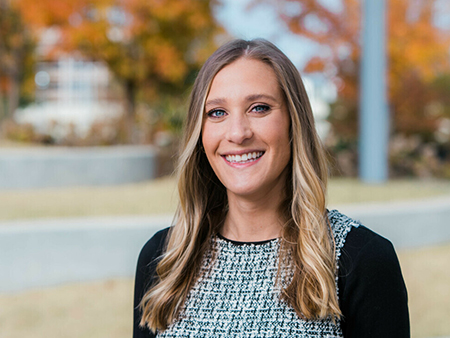
Thanksgiving is a time when many Americans try out recipes from previous generations of their family. What’s probably not included in your grandmother’s recipe for turkey stuffing is what happens at the molecular level to make it worth gobbling up.
However, understanding how various cooking methods affect food at the molecular level is one key to becoming a great cook, according to Lizzy Davis, Ph.D., an assistant professor in the UAB Department of Nutrition Sciences. “Many people think they don’t have the skills to be a good cook, but cooking is science,” Davis said. “When they understand how they’re impacting the food at a molecular level with their cooking techniques and spices, anyone can be a great cook.”
Brining vs. basting
For example, Davis recommends brining instead of basting the turkey to keep it from drying out when cooking. “Basting the turkey does not impact the moistness of the meat, but it may make the skin flavorful,” she said.
Brining in a salt solution allows the mixture to pass through the absorbent meat cells during the soaking process using a method called diffusion — the movement of water through a semi-permeable membrane, in this case the meat cells. Through diffusion, the salt and water within the meat cells balance with the salt and water in the surrounding brine, which results in a higher concentration of salt and water in the meat, which makes it tender and juicy when ready to serve.
“The liquid from the outside brine is carrying the salt and the seasonings into the bird,” Davis said. “Once the brine is diffused into the cells of the turkey, you’ve got all this moisture and seasoning trapped inside the turkey.”
It helps to understand the structure of turkey muscles, which are made up of long, bundled fibers, and each one is housed in a tough protein sheath. As the turkey heats during cooking, the proteins that make up this sheath will contract, causing juices to be forced out of the bird.
However, the salt helps reduce this shrinkage by dissolving some of the muscle proteins, resulting in less muscle contraction and more juices staying in the turkey. Davis recommends submerging your turkey in a large pot filled with the salt solution and storing it in the refrigerator for about 24 hours before cooking.
Picking your potatoes
Davis says choosing the right kind of potato for your mashed potato dish is extremely important. She recommends using starchy russet potatoes. “These potatoes contain more starch, which means they will be easier to mash,” she said. “This makes the mashed potatoes fluffy and absorbent, but it may require more butter and milk or cream.”
Davis shares these tips for preparing better mashed potatoes:
- Don’t cut them into pieces that are very small.
- Don’t overmix – too much starch released makes them gluey and gummy.
- Try using a potato ricer, which is similar to a cheese grater.
- Only add small amounts of warmed butter and milk/cream at a time.
- Bake or boil them.
- Boil in just enough milk or stock until the liquid is absorbed.
Piece of the pie
When it comes to making the all-important dessert pie, Davis says the crust should be flaky, not tender and tough. The key is to use cold butter in the dough mixture, because “phase transitions” — going from a solid to a liquid to a gas — is important for getting a flaky crust.
“When the butter is cold, it is considered a solid,” Davis said. “As butter melts into a liquid, it releases water in steam form (gas). This transition to gas causes expansion of little pockets within the pie crust and gives rise to a flaky pie crust.”
Davis says food is an experience, so as people begin to prepare their recipes, it is important to try new flavors, spices, and cooking methods.
“Enjoy your Thanksgiving meal,” Davis said. “There is no such thing as a naturally great chef – just someone who had fun experimenting in the kitchen with different cooking techniques and flavors. Sometimes experiments work, and sometimes they flop. Have fun incorporating these cooking techniques into the dishes your family makes during Thanksgiving.”
